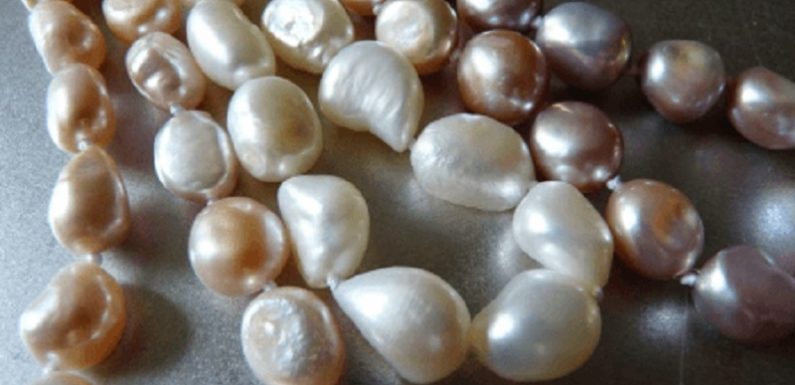
All freshwater pearls can be grown inside the mussels that are living inside the lakes and rivers. Most of the freshwater pearls are produced in China.
All saltwater pearls can be created by the oysters that live in oceans which are mostly in Australia, Indonesia, Tahiti and Thailand etc.
Akoya pearls are the most popular pearls and are usually grown in China and Japan and to also to some extent in Vietnam. Akoya pearls are quite popular and known as high-quality pearls having much superior lustre and also available in the round shape.
How saltwater and freshwater pearls are created?
Most pearls whether saltwater or freshwater pearls are not natural. They all are cultivated. Which means, a small tissue piece of mollusc or a bead is placed into the mollusc, which gets covered with nacre. The pearl material is thus created.
Pearls that are created in this way are known as “cultured pearls.”
Usually, the longer time it takes to grow a certain pearl, the quality of nacre formed will be much better. Also, those pearls which are cultivated for much longer period also tend to be more expensive.
Naturally occurring pearls nowadays are very occasional, and therefore, they are not affordable at all for most of the people. Same is also true for freshwater pearls as they too are predominantly cultured.
How they differ?
- Lustre
Usually freshwater pearls have thicker nacre comparatively hence they are less glossy and lustre as compared to saltwater pearls.
- Nacre
Usually saltwater pearls have much thinner coating in the range of 0.5mm to 6mm. All freshwater pearls are entirely made of nacre.
- Shape and colour
Saltwater pearls are only round in shape while freshwater pearls can be round, oval and in many colours.
- Size
Freshwater pearls which are cultured for 2 years or less are usually smaller in size however those which are cultured for 3 to 6 years are bigger and comparable with seawater pearls.
- Price
All freshwater pearls are cheaper comparatively as they can be produced in larger quantity.


